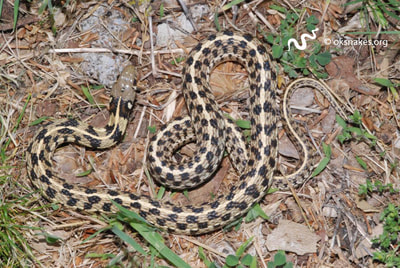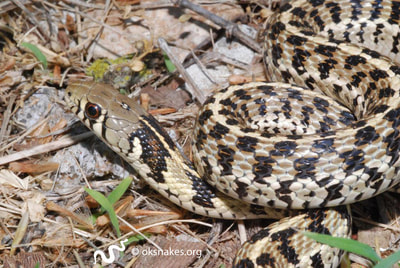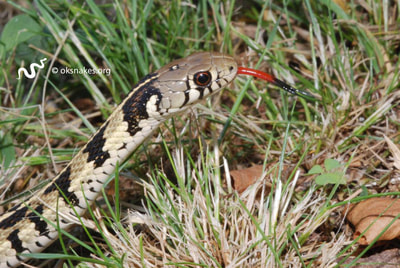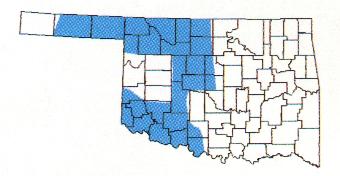Marcy's checkered gartersnake
Thamnophis marcianus marcianus
Thamnophis marcianus marcianus
HARMLESS
Description:
This snake typically has an olive, brown, or tan body color with a thin light-colored dorsal stripe. A very prominent black checkered pattern runs down each side of the snake. There is a dark blotch on either side of its neck and these blotches are separated from the corners of the mouth by a light-colored crescent shape. The scales are keeled, the belly is plain, and the anal plate is single.
Size:
Adults 18 - 36 inches (46 - 91 cm)
Prey:
Frogs, fish, and occasionally crayfish
Reproduction:
Mates in spring and gives birth to 5 - 20 babies in late June to August. Babies are 8 - 10 inches (20 - 25 cm) long.
Habitat:
Dry grasslands near a source of water
Other Information:
The checkered gartersnake is usually active during the day, but during hot summer months it will search for food in the cooler evening hours.
Why doesn't the range map show this species in my county?
Description:
This snake typically has an olive, brown, or tan body color with a thin light-colored dorsal stripe. A very prominent black checkered pattern runs down each side of the snake. There is a dark blotch on either side of its neck and these blotches are separated from the corners of the mouth by a light-colored crescent shape. The scales are keeled, the belly is plain, and the anal plate is single.
Size:
Adults 18 - 36 inches (46 - 91 cm)
Prey:
Frogs, fish, and occasionally crayfish
Reproduction:
Mates in spring and gives birth to 5 - 20 babies in late June to August. Babies are 8 - 10 inches (20 - 25 cm) long.
Habitat:
Dry grasslands near a source of water
Other Information:
The checkered gartersnake is usually active during the day, but during hot summer months it will search for food in the cooler evening hours.
Why doesn't the range map show this species in my county?



